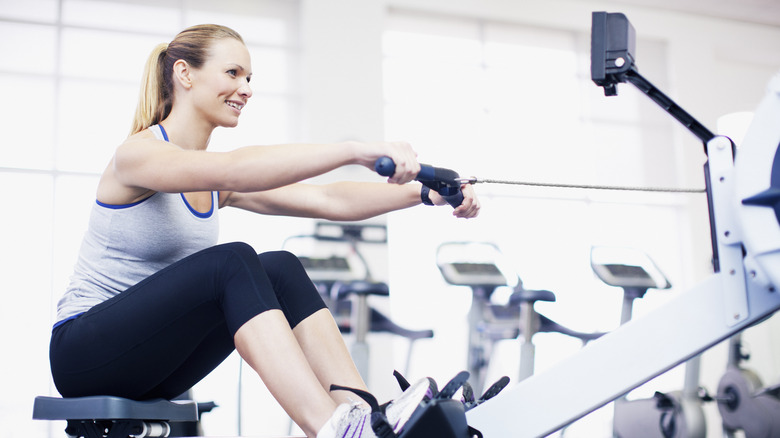Why Progressive Overload May Be Exactly What You Need To Achieve Your Fitness Goals
Anyone who has attempted to enter a new fitness journey has most likely faced overwhelming moments and challenges. When building a new fitness habit or reaching the next level, the hardest part might be simply getting the motivation to get started. Whether your goal is to lose a determined amount of weight or to simply be as strong as you can be, there's no downside to starting a fitness journey. The Centers for Disease Control and Prevention explains that physical activity, no matter your level, can help you reduce the risk of major diseases, manage weight, improve your mental health, and strengthen your bones and muscles. Exercising consistently can also help you improve your habit-building skills and motivate you to continue improving. If you're beginning your journey, building your motivation and determination will likely be one of the first obstacles. However, new fitness techniques are helping reduce the overwhelm and get you closer to your fitness goals.
Fitness techniques like progressive overload are the perfect combination between challenging and obtainable that you may need to help you get to the next step in your fitness journey. As well, progressive overload can also help you physically get stronger and fitter through your exercise. Progressive overload can be applied to any exercise routine and is a principle that's easy to follow to help almost anyone achieve their fitness goals.
What is progressive overload?
If you're looking for a way to challenge yourself during your fitness journey without feeling demotivated or overwhelmed by a complicated fitness routine, progressive overload can make it easier. Progressive overload is a technique in which you gradually increase the intensity or difficulty of your exercise routine over time. Chad Barribeau, CSCS, of D1 Training, tells PopSugar, "It's really done in four main ways: increasing resistance, increasing endurance or length of workouts, increasing tempo or speed, and increasing reps or sets." This increase in difficulty is done slowly but in a way that will keep your body challenged and always working harder. Not only will your body not fall stagnant under the same exercise routine, but you will get the encouragement of constantly achieving a harder goal.
Nerd Fitness explains that the purpose of progressive overload is to "overload" your muscles with more resistance and challenge. Although the idea is to overload your body with a harder challenge each time, you are doing so slowly in a rhythm that is still attainable for you. When doing strength training, aerobics, or cardio, it's always a good idea to increase your challenge so that your body continues to work harder. There are various ways you can add progressive overload into your fitness journey to ensure that you continue to work harder and smarter.
How to use it to reach your fitness goals
Adding a progressive overload to your fitness journey will look different depending on what physical activity you are doing. Masterclass explains that you can steadily increase the difficulty in strength training by adding more weight to your exercise or doing more repetitions. Before increasing the challenge of your exercise, you want to ensure you are still completing the workout with proper form. The idea of progressive overload is to continue building endurance and exercising harder, but you don't want to give up the correct form. Any exercise done incorrectly or unsafely will result in injuries rather than success. Other ways to increase the difficulty of your workouts are by running an extra mile or taking shorter breaks in between sets. Whatever exercise you are doing can be made more challenging with simple modifications.
The time frame in which you gradually add more difficulty will ultimately depend on you and your journey. BodyBuilding explains that you can slowly increase weights, time, or repetitions in your exercise every few weeks. An example is spending a week using dumbbells of one weight before increasing the weight the following week. The easiest way to know when it is time to increase the difficulty of your exercise is when your current routine starts to feel comfortable. Keeping your body challenged is the best way to keep it working harder and closer to your fitness goals.


